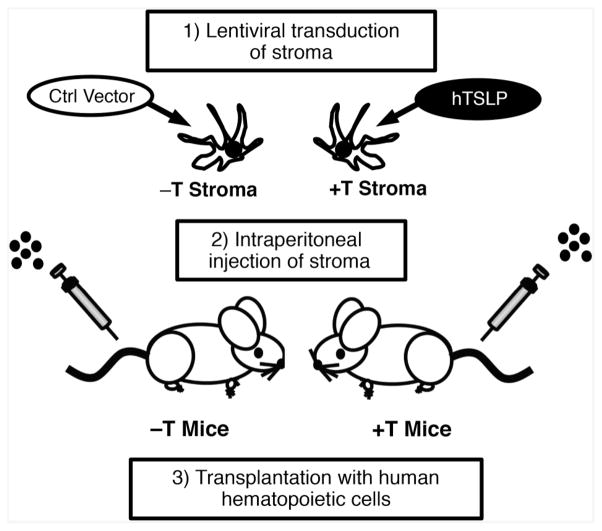Figure 3.
Strategy for engineering PDX mice to express hTSLP. Human stromal cells were transduced to express high levels of hTSLP (+T stroma) or with control (ctrl) vector (−T stroma). Immune deficient mice were engineered to express physiological levels of hTSLP by weekly intraperitoneal injection of +T stroma (+T mice). hTSLP was not detectable in −T mice that were produced by weekly injections with −T stroma. Together +T and −T mice produce a model system to study the role of TSLP in CRLF2 B-ALL. +T mice provide a PDX model for identifying combinations of therapies that can be used to effectively treat CRLF2 B-ALL arising from diverse genetic landscapes and in context of physiological levels of hTSLP. B-ALL, B-cell acute lymphoblastic leukemia; hTSLP, human TSLP; TSLP, thymic stromal lymphopoietin.

